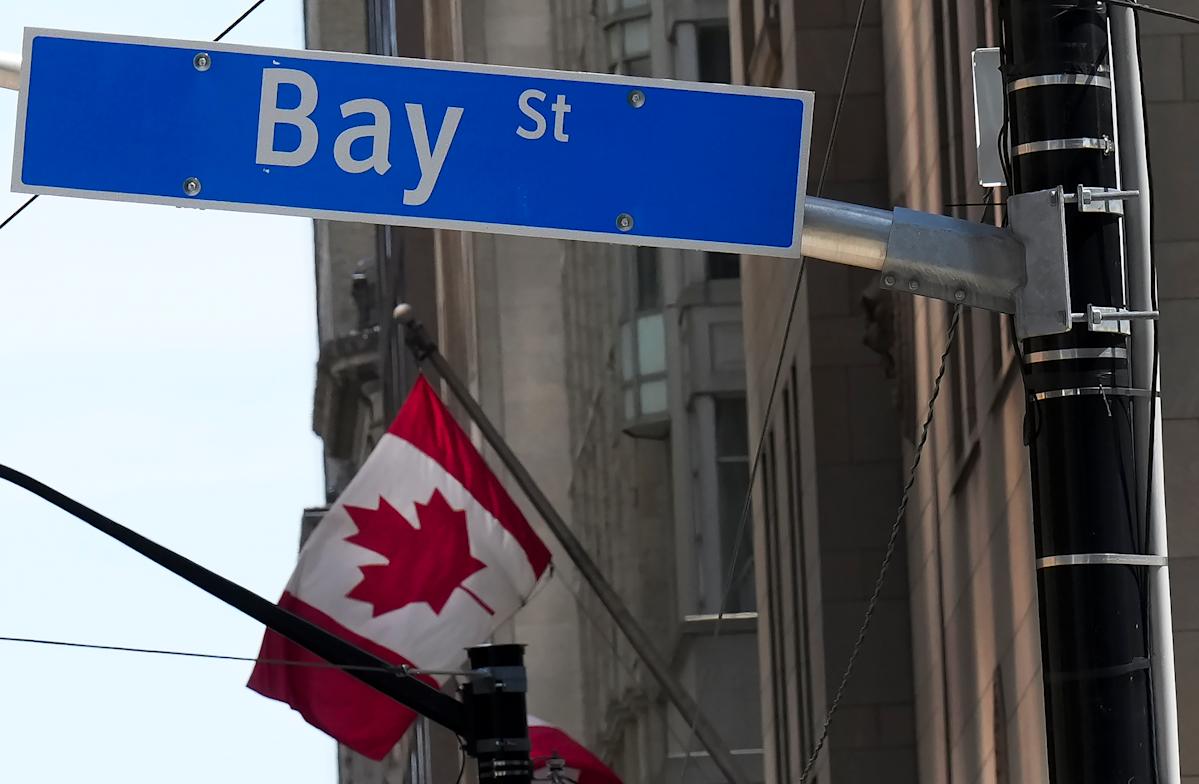CIBC Capital Markets analyst Ian de Verteuil and his colleagues revisit their “land of oligopolies” stock market thesis from 2019. (THE CANADIAN PRESS/Nathan Denette · The Canadian Press
Analysts at CIBC Capital Markets are tired of investors dismissing the Toronto Stock Exchange as little more than banks, energy, and mining companies. In a lengthy new report, they argue “dismissive comments” to this effect ignore “wonderful buy-and-hold options that are in plain sight.”
“Long gone are the days when Canada and the Canadian equity market could adequately be described as a home for ‘hewers of wood, drawers of water,’” CIBC’s Ian de Verteuil wrote earlier this week.
“We believe that over half the market capitalization of the S&P/TSX is comprised of companies that should provide investors with stable, attractive returns over the long term.”
In the report, de Verteuil and his colleagues revisit their “land of oligopolies” thesis from 2019. This research focused on sectors with only a handful of domestic competitors – railroads, banks, grocers, and communications.
CIBC says this group of only 15 stocks have been strong performers since 2019. Today, they make up 30 per cent of the market capitalization of the S&P/TSX Composite index (^GSPTSE), a 35 per cent share of its dividends, and a quarter of the share of buybacks.
However, analysts at the bank now see four “wanna be” oligopolies as potential rivals to the long-term stock price performance of Canada’s stalwart sectors.
“We highlight four groups of stocks – life insurance, property and casualty insurance, waste and pipelines,” de Verteuil and his team wrote. “Unlike the oligopolies, these businesses have each experienced significant change since the start of the century.”
Here’s what they say about the thin competition in these four sectors:
“The acquisitions of Canada Life by Great-West and Clarica by Sun Life (and a host of smaller deals) have now resulted in four large insurers making up over 70 per cent of the Canadian market.”
Stocks include Great-West Lifeco (GWO.TO), Sun Life Financial (SLF.TO), Manulife Financial Corporation (MFC.TO), and iA Financial (IAG.TO).
“Over the past several years, there has been a relatively consistent withdrawal of foreigners from Canada – most recently the acquisition of Travellers by Definity.”
Stocks include Intact Financial (IFC.TO), and Definity Financial Corporation (DFY.TO).
“Canada has had publicly listed waste companies since 2002, with the IPO of Progressive Waste, but it was the 2016 takeover/merger involving Waste Connections that significantly accelerated consolidation in the industry.
“With the more recent IPO of GFL and its strong price performance, Canada’s two waste management stocks now represent two per cent of the market cap of the S&P/TSX.”
Stocks include GFL Environmental (GFL.TO) and Waste Connections (WCN.TO).
“Pipelines are actually very close comparisons to our three ‘cash-flow’ oligopolies. They are capital intensive (very much like the telecoms); their services are essential (like grocers and telecoms); and they are an important logistical ingredient in the Canadian economy (like the rails).”
Stocks include Enbridge (ENB.TO) and TC Energy (TRP.TO).
Jeff Lagerquist is a senior reporter at Yahoo Finance Canada. Follow him on X @jefflagerquist.
Download the Yahoo Finance app, available for Apple and Android.

